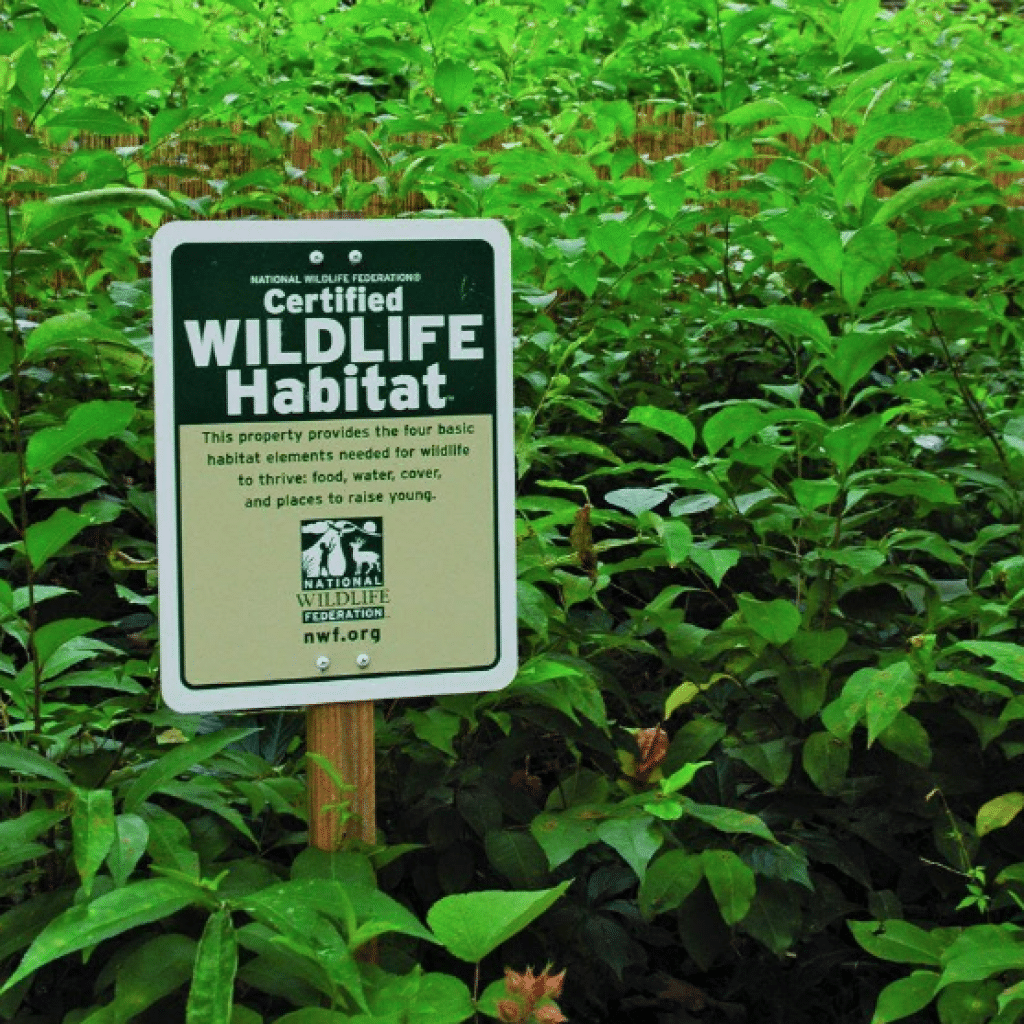The Four Necessities for Backyard Habitat
Attracting wildlife to one’s lawn is one of the great joys of owning a backyard habitat. It’s also a great and sustainable gardening practice. After all, few things match the beauty of bright songbirds. Or the sight of a furry mammal such as a rabbit.
Of course, your backyard has to have the right ingredients for “life,” so-to-speak, if you are to attract these animals to your property.
This post will look at the essentials you need to create a sustainable garden that serves as a long-lasting backyard habitat.
The Four Elements of Creating a Backyard Habitat
A backyard habitat to welcome and sustain life needs to have the essential ingredients for life. It’s no different than the rest of the world or the environment around us. There are four critical elements a thriving backyard needs to be habitable:
- Food
- Shelter
- Water
- Safety
Considerations for the Four Elements of a Healthy Backyard Habitat
Food & Water
- Food – For a backyard habitat, your food sources will likely be native plant matter, although insects and worms can feed carnivorous birds and small mammals. Ultimately, your backyard habitat needs to provide an abundant source of the food that the species’ you’re looking to attract would eat in the first place.
- Water – Animals will need a water source to survive in your backyard. That may come from a water feature, stored water or perhaps, a rain garden. Keep in mind that different species obtain water from various sources, so this may require some planning. You may consider placing some water sources low to the ground as well as on raised pedestals.
Shelter & Safety
- Shelter – Some animals that visit your backyard can live in structures you build for them or take residence in “sheltered” regions of your backyard, such as under trees or in “rockeries,” as the British call small stone piles. It’s essential to create the type of shelter in which your desired species’ will reside. Even if the food and water are there, a lack of adequate protection and cover from predators will reduce your backyard habitat into nothing more than a backyard restaurant.
- Safety – When I mention “safety,” I mean creating an environment that’s safe for the species you’re looking to attract. Individual species may be sensitive to certain chemicals or are prey for others, meaning that they may or may not fare well in your garden. One of the trickiest aspects of building a sustainable backyard habitat is to provide animals guaranteed protection from outside threats and safe places to raise their young.
It’s also important to keep in mind that certain species will have specific requirements for their ideal backyard habitat.
Therefore, give some advanced consideration as to what kind of animal life you want to attract. To help you get started, here are some quick pointers.
Popular Species for a Tennessee Landscape
So what kind of animals do you want to bring into your backyard? Do you like cute and fluffy? Do you want colorful and winged? No matter your preference, you have to make sure that your backyard habitat provides the right blend of food, shelter, water and safety for those creatures.
Checking off a few boxes beforehand will increase your chances of success.
Hummingbirds
- Food – Sage, beebalm, Cardinal flowers, trumpet honeysuckle; these are popular nectar-producing plants that hummingbirds love to feed on; provide nectar feeders for convenience
- Water – Fountains or drip structures, misting devices; hummingbirds “bath” themselves frequently and tend to hover near falling or floating water droplets
- Shelter – Perches, tall, leafy trees with large shrubs; hummingbirds tend to nest in sheltered trees or shrubbery
- Safety – Avoid pesticides
Butterflies
- Food – Various nectar-producing flowers; from nectar plants and flowers with ideally large enough leaves to provide plenty of landing space
- Water – Puddles; butterflies get water by taking up moisture from puddles. The challenge here is allowing water to pool in places without attracting mosquitos. If it does, you may also want to consider adding a birdhouse for purple martins.
- Shelter – Leaf litter, brush piles; grounded plant matter provides cover for caterpillars and overwintering butterflies
- Safety – Avoid pesticides, provide tree coverage around nectar sites as this protects butterflies from getting carried away by strong winds
Rabbits
- Food – Clover, lettuce, carrots, and berries as rabbits eat some of our favorite fruits and veggies as well (if you have a veggie garden, you may find it necessary to construct some low fencing)
- Water – A water dish, hole in the ground to catch water, preferably in bushy areas
- Shelter – Plant bushes, evergreens, brush piles, and tall grass as rabbits like to hide in dense shrubbery to feel safe from predators
- Safety – Minimize pesticides, provide tall foliage to hide them from predators, i.e. birds of prey, snakes
Attracting Wildlife with a Backyard Garden
To create a sustainable backyard habitat, you will need to incorporate the four elements of food, water, shelter and safety. More importantly, they need to appeal to the species you are looking to attract. That means some species may coexist in your backyard, while others may not be able to survive in the same space.
Think about how to incorporate these natural elements throughout your property, whether it’s your garden beds, the front yard or even your vegetable garden.
Create a sustainable, eco-friendly environment that includes beauty and wildlife. With a little research and effort, you can bring some welcomed critters to your property. If you want to become the envy of some neighbors, consider checking out The National Wildlife Federation. For a small donation and confirming that your garden meets the four minimum requirements, you can get a nifty sign that shows you care.

If you can’t do it yourself, consider a Landscape Architect in Knoxville, TN – like myself – to convert your garden into a diverse wildlife habitat. I’ll handle the architectural design and ensure you have a backyard space that could make many friendly critters a happy habitat.






